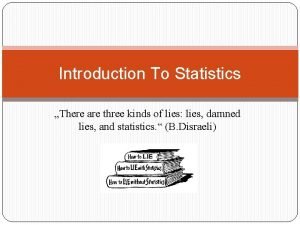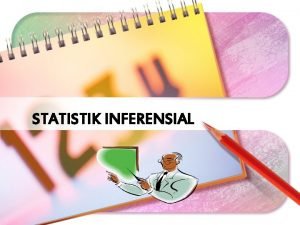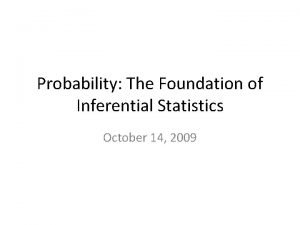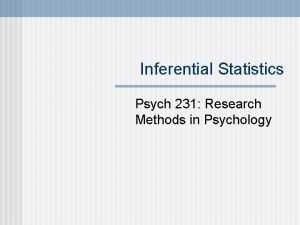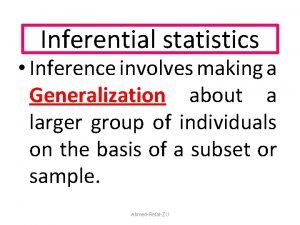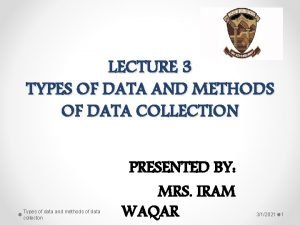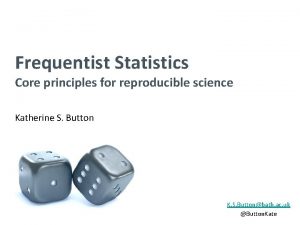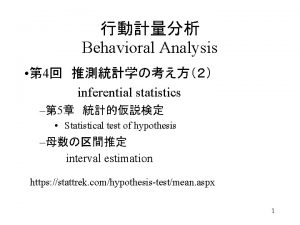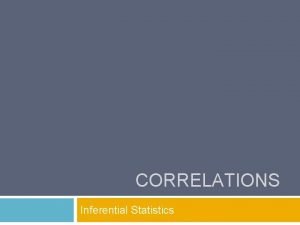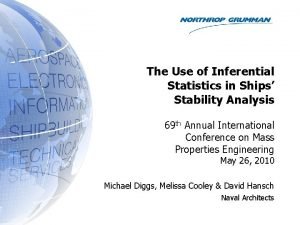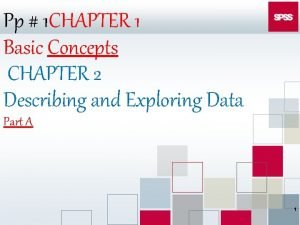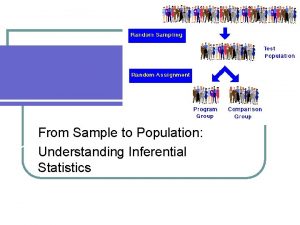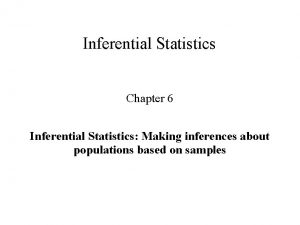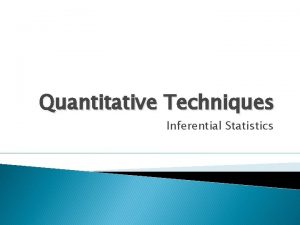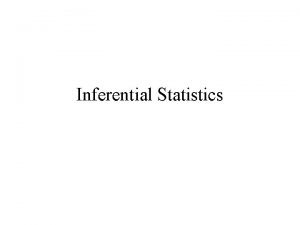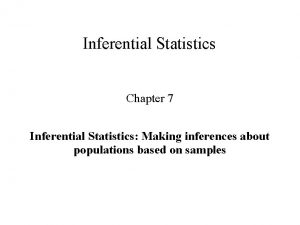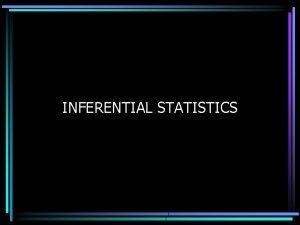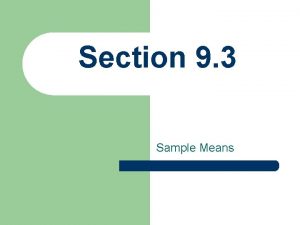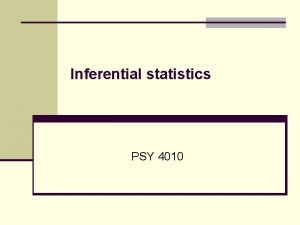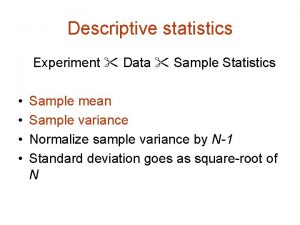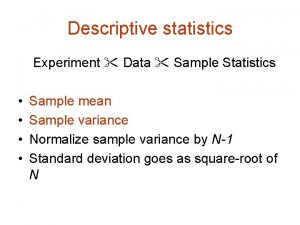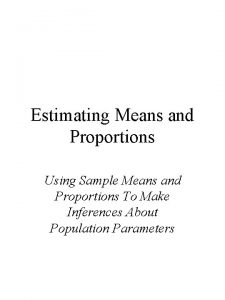Inferential statistics Inferential statistics means using sample data













- Slides: 13

Inferential statistics

► Inferential statistics means using sample data to make decisions or “inferences” about a population

► Purposes of inferential statistics: § Estimating population parameters from sample data. § Testing hypotheses

Inferential Statistics ► To find out information about a population, we can do two things: ► CENSUS: Look at every object or individual in the population. § Advantages: We know everything exactly! § Disadvantages: It takes a lot of time and money, may even be impossible to do if measurements are destructive

► STATISTICAL INFERENCE: We sample the population (in a manner to ensure that the sample correctly represents the population). We then take measurements on our sample and infer (or generalize) back to the population. § Advantages: Less time and money. § Disadvantages: We no longer know everything exactly, we have some error. EXAMPLE: We may want to know the average height of all adults (over 18 years old) in the U. S. Our population is then all adults over 18 years of age. If we were to census, we would measure every adult and then compute the average. By using statistics, we can take a random sample of adults over 18 years of age, measure their average height, and then infer that the average height of the total population is ``close to'' the average height of our sample. ► The goal of inferential statistics is to use sample statistics to make inference about population parameters ►

Null and Alternative Hypotheses in general, operates by disproving/ unsatisfactory hypotheses and proposing new-andimproved hypotheses which are testable. The approach we take in statistics is exactly this scientific method. We start with a hypothesis which we assume/ is correct. We call this the null hypothesis/ or , and our goal is to reject in favor of the alternative hypothesis, . ► Science, ►

► analysis of covariance (ANCOVA) § A statistical test that allows the researcher to statistically control for some variables that may have an influence on the dependent variable. ► analysis of variance (ANOVA) § A parametric statistical test that is used to compare the difference between the means of two or more groups or sets of values.

► chi-square test § A nonparametric statistical test that is used to compare sets of data that are in the form of frequencies or percentages (nominal level data). § confidence interval § A range of values that, with a specified degree of probability, is thought to contain the population value.

► degrees of freedom (df) § A concept in inferential statistics that concerns the number of values that are free to vary. ► level of significance (probability level) The probability of rejecting a null hypothesis when it is true; symbolized by lowercase Greek letter alpha; also symbolized by p.

► multiple regression § A statistical procedure used to determine the influence of more than one independent variable on the dependent variable. ► multivariate (MANOVA) analysis of variance § A statistical test that examines the difference between the mean scores of two or more groups on two or more dependent variables that are measured at the same time.

► parametric tests § Types of inferential statistics that are concerned with population parameters. When parametric tests are used assumptions are made that (a) the level of measurement of the data is interval or ratio, (b) data are taken from populations that are normally distributed on the variable that is being measured, and (c) data are taken from populations that have equal variances on the variable that is being measured

► nonparametric statistics) tests (distribution-free § Types of inferential statistics that are not concerned with population parameters, and requirements for their use are less stringent; can be used with nominal and ordinal data and small sample sizes.

► t-test ( t) § A parametric statistical test that examines the difference between the means of two groups of values. Types of t-tests are the independent ttest (independent samples t-test) and the dependent t-test (paired t-test. (
 Polynomic qualitative variable
Polynomic qualitative variable T-test adalah
T-test adalah Empirical method probability
Empirical method probability Inferential tests psychology
Inferential tests psychology Inferential statistics table
Inferential statistics table Difference between descriptive and inferential statistics
Difference between descriptive and inferential statistics Rare event rule for inferential statistics
Rare event rule for inferential statistics Inferential statistics
Inferential statistics Inferential statistics
Inferential statistics Inferential statistics 意味
Inferential statistics 意味 Inferential statistics correlation
Inferential statistics correlation Advantages of inferential statistics
Advantages of inferential statistics Characteristics of inferential statistics
Characteristics of inferential statistics Frequency distribution ap psychology
Frequency distribution ap psychology
